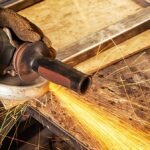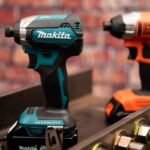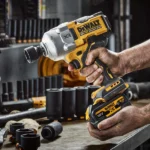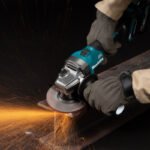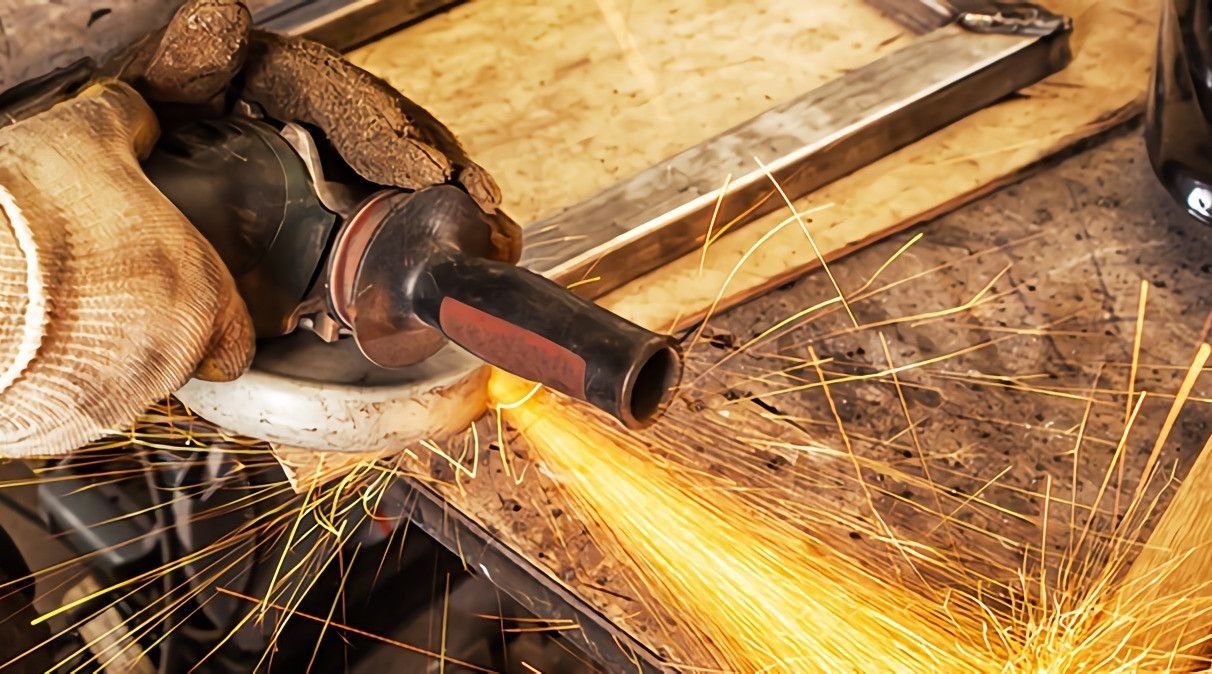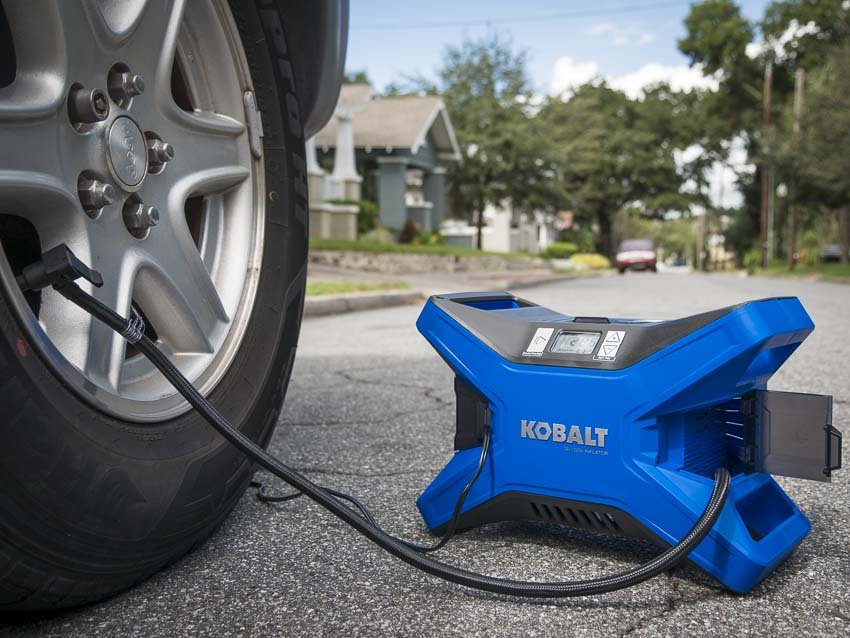Impact wrenches are essential power tools designed to deliver high torque output with minimal exertion. They function by storing energy in a rotating mass and then delivering it suddenly to the output shaft.
This mechanism makes them incredibly effective for loosening or tightening bolts, nuts, and fasteners that require substantial torque, far beyond the capability of manual wrenches.
The utility of an impact wrench is particularly prominent in automotive repairs and heavy-duty construction tasks.
For instance, changing tires, assembling heavy machinery, or performing maintenance on large equipment are tasks that benefit significantly from the high torque generated by these tools. Without an impact wrench, such activities would be labor-intensive and time-consuming.
Designed to handle demanding applications, impact wrenches come in various power sources, including pneumatic (air-powered), electric (corded), and battery-operated (cordless) models.
Pneumatic impact wrenches are commonly found in professional auto repair shops due to their superior power and durability. Electric models, both corded and cordless, are gaining popularity for their convenience and ease of use, especially among DIY enthusiasts and home mechanics.
Another critical aspect of impact wrenches is their versatility. They are available in different sizes and drive types, from compact 1/4-inch models ideal for precision work to robust 1-inch versions used in industrial settings.
This range ensures that there is an impact wrench suited for every specific need, whether it’s light maintenance or heavy-duty construction.
Incorporating an impact wrench into your toolkit can significantly enhance efficiency and productivity. These tools not only save time but also reduce physical strain, making them indispensable for both professionals and hobbyists.
By understanding the basic mechanics and applications of impact wrenches, you can better appreciate their value and select the right one for your needs.
Table of Contents
Types of Impact Wrenches
When selecting an impact wrench, understanding the different types available is crucial for making an informed decision. The primary categories of impact wrenches include pneumatic (air-powered), electric (corded), and cordless (battery-powered) models.
Each type has distinct characteristics, benefits, and potential drawbacks that cater to specific needs and applications.
Pneumatic impact wrenches, also known as air-powered models, are renowned for their high power and efficiency. These tools are typically used in professional settings like automotive repair shops and industrial environments due to their ability to deliver consistent torque.
The primary advantage of pneumatic wrenches is their unparalleled power-to-weight ratio, making them ideal for heavy-duty tasks.
However, they require a constant supply of compressed air, necessitating the use of an air compressor, which can be an added expense and limit portability.
Electric impact wrenches, on the other hand, come in corded varieties that offer a reliable source of power without the need for an air compressor.
Corded models tend to be more affordable than their pneumatic counterparts and are well-suited for both professional and DIY use. They provide sufficient torque for most applications and are relatively easy to maintain.
The main drawback is the dependence on a power outlet, which can restrict mobility and make them less convenient for outdoor or remote jobs.
Finally, cordless impact wrenches, which are battery-powered, offer the highest level of portability and convenience. These models have become increasingly popular due to advancements in battery technology, providing ample power and run-time for a wide range of tasks.
Cordless impact wrenches are ideal for users who require mobility and flexibility, such as construction workers and home mechanics. However, they typically have a higher initial cost and require periodic battery recharging or replacement, which can add to the long-term expense.
In comparing these types of impact wrenches, it’s clear that each has specific advantages and limitations. Your choice will depend on factors such as the intended use, required power, budget, and the availability of power sources or air supply.
By understanding the unique features of pneumatic, electric, and cordless impact wrenches, you can select the model that best meets your needs and preferences.
Key Features to Consider
When selecting an impact wrench, understanding the key features is crucial to ensure optimal performance and user satisfaction. One of the primary considerations is the torque output, which defines the wrench’s ability to handle various tasks.
Higher torque output is essential for heavy-duty applications, such as automotive repairs or industrial maintenance, as it provides the necessary force to loosen or tighten stubborn bolts and nuts.
Another critical feature is the speed settings, often referred to as RPM (revolutions per minute). Variable speed settings allow users to adjust the impact wrench’s speed according to the specific requirements of the task at hand.
This flexibility ensures precision and control, particularly in delicate operations where too much speed could damage the components being worked on.
The size and weight of an impact wrench are also significant factors. A compact and lightweight model is easier to maneuver, especially in tight or hard-to-reach spaces.
However, it is important to balance these aspects with the tool’s power and durability. A well-designed impact wrench should offer a good mix of portability and robustness.
Handle design is another feature that can greatly affect user comfort and efficiency. Ergonomically designed handles reduce strain and fatigue during extended use. Look for models with cushioned grips and non-slip surfaces to enhance comfort and control.
This is particularly important for professionals who use impact wrenches on a daily basis.
For cordless impact wrenches, battery life is a key consideration. A longer battery life ensures uninterrupted work, while a quick recharge time minimizes downtime. High-capacity lithium-ion batteries are often preferred for their ability to deliver consistent power and longer run times.
Additionally, it is beneficial to have a battery level indicator to monitor remaining power and plan charging cycles accordingly.
By carefully evaluating these features, users can select an impact wrench that meets their specific needs, ensuring efficient and effective performance across a variety of applications.
Top Brands and Models
When selecting the best impact wrench, considering reputable brands is crucial. Leading the market are brands like DeWalt, Milwaukee, Makita, and Ingersoll Rand, each offering a range of models that cater to both professional and DIY enthusiasts.
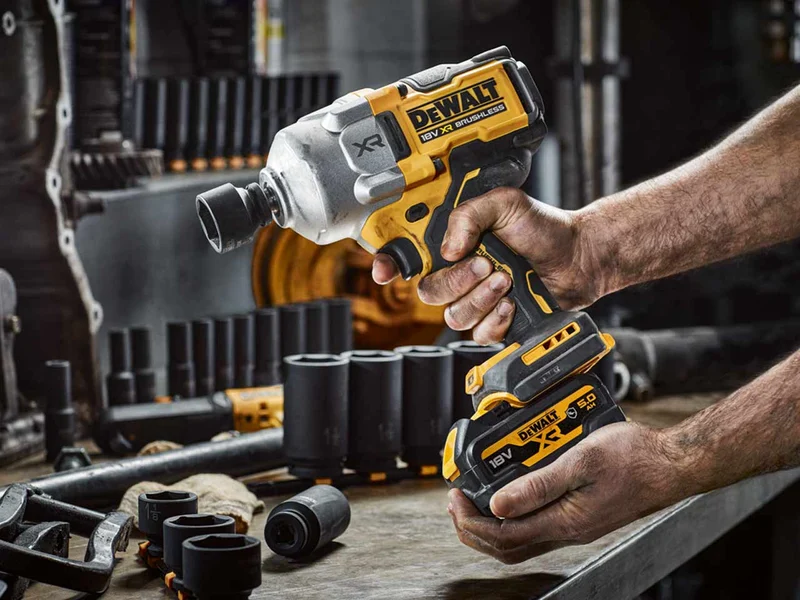
DeWalt
DeWalt is renowned for its durable and high-performance tools. The DeWalt DCF899HB 20V MAX XR is a standout model, featuring a brushless motor and 700 ft-lbs of max torque. Users appreciate its ergonomic design and three-speed selector switch that provides control for various applications.
The DCF899HB also boasts positive reviews for its longevity and battery life, making it a top choice for both heavy-duty and occasional use.
Milwaukee
Milwaukee’s impact wrenches are celebrated for their power and innovative features. The Milwaukee 2767-20 M18 Fuel is particularly notable, offering up to 1,000 ft-lbs of fastening torque and 1,400 ft-lbs of nut-busting torque.
The Redlink Plus intelligence ensures optimal performance while protecting against overloads. Users commend its reliability and the convenience of its four-mode drive control, which enhances versatility across different tasks.
Makita
Makita is another respected brand known for its precision and efficiency. The Makita XWT08Z LXT 18V is a prime example, delivering 740 ft-lbs of max torque and 1,180 ft-lbs of breakaway torque.
It features a three-speed power selection switch for precise fastening control, and its compact design makes it easy to handle. Reviews highlight its robustness and the long-lasting battery life, making it ideal for extended use on demanding projects.
Ingersoll Rand
Ingersoll Rand is synonymous with industrial-grade impact wrenches. The Ingersoll Rand W7150-K2 1/2-Inch 20V is highly esteemed for its power and durability, offering 780 ft-lbs of max reverse torque. It features a high-efficiency motor and a steel-lined aluminum hammer case for added durability.
Users frequently praise its rugged build and the long-lasting performance, making it a preferred choice for heavy-duty applications.
These brands and models exemplify the best in the impact wrench market, offering a range of options tailored to different needs and preferences. Whether you require a tool for professional use or DIY projects, these top-rated impact wrenches provide reliable performance and exceptional features.
Usage and Safety Tips
When it comes to using an impact wrench, proper handling and safety precautions are paramount. Firstly, it is essential to read the manufacturer’s manual thoroughly. This document offers critical insights into the specific model you are using, including operational guidelines and safety warnings tailored to your impact wrench.
Before starting any task, always ensure that you are wearing the appropriate protective gear. Safety glasses and gloves are non-negotiable as they protect your eyes from flying debris and your hands from potential injuries.
Additionally, wearing ear protection is advisable, especially if you are using the impact wrench for prolonged periods, as the tool can generate considerable noise.
When handling the impact wrench, maintain a firm grip and ensure that your stance is stable. This stability reduces the risk of losing control of the tool, which could lead to accidents.
Always start the wrench at a lower setting to get a feel for its power and gradually increase the torque as needed. Avoid over-tightening fasteners as this can strip threads and damage both the tool and the workpiece.
Regular maintenance is crucial for ensuring the longevity of your impact wrench. After each use, clean the tool to remove any dust or debris that could impair its function.
Check for any signs of wear or damage, particularly in the sockets and other moving parts. Lubricate these components as recommended by the manufacturer to keep them operating smoothly.
Another key aspect of safe operation is to be aware of your surroundings. Make sure the workspace is well-lit and free of clutter. If you are working in a shared or public area, ensure that those around you are aware of your activities to prevent accidental injuries.
By adhering to these usage and safety tips, you can maximize the efficiency of your impact wrench while minimizing the risk of accidents. Always prioritize safety and maintenance to prolong the life of your tool and ensure successful, injury-free projects.
Comparing Impact Wrenches to Other Tools
When it comes to selecting the right tool for a job, understanding the distinct functionalities and benefits of each tool is crucial. An impact wrench stands out in its category due to its unique capabilities and efficiency.
Here, we compare impact wrenches with other similar tools like ratchets, torque wrenches, and drills to highlight their specific advantages and optimal usage scenarios.
Ratchets are commonly used for tightening and loosening bolts and nuts, often in tight spaces where precision is required. Unlike an impact wrench, a ratchet relies on manual effort to generate torque, which can be time-consuming and physically demanding for larger bolts or high-torque applications.
An impact wrench, with its powerful motor and hammering mechanism, can effortlessly handle tasks that would be labor-intensive with a ratchet, making it ideal for automotive repairs and heavy machinery maintenance.
Torque wrenches are designed to apply a specific amount of torque to fasteners, ensuring that they are neither too tight nor too loose. While they are indispensable for tasks requiring precise torque settings, such as assembling engine components, they lack the speed and power of an impact wrench.
An impact wrench may be preferable when the primary goal is to quickly remove or install fasteners, especially in situations where exact torque is not critical, such as tire changes or construction projects.
Drills, particularly those with hammering functions, can sometimes be used to drive screws and bolts. However, their primary design focuses on drilling holes, which means they may not provide the same level of torque and impact as a dedicated impact wrench.
An impact wrench excels in delivering high torque outputs with minimal user effort, making it superior for tasks involving stubborn or rusted fasteners where a drill might struggle or become damaged.
In essence, while each tool has its own set of advantages, an impact wrench is often the better choice for tasks that require high torque and efficiency.
Its ability to rapidly fasten or loosen bolts with minimal physical strain makes it indispensable for professionals in automotive, construction, and heavy equipment industries.
Common Mistakes to Avoid
When utilizing an impact wrench, certain common mistakes can undermine its effectiveness and lead to unnecessary wear and tear. Understanding these pitfalls can help users maximize the tool’s performance and extend its lifespan.
One prevalent error is over-tightening bolts. Impact wrenches are powerful, and without proper control, they can apply excessive torque, potentially damaging threads or the fasteners themselves. To avoid this, users should consult the torque specifications provided by the manufacturer and use a torque wrench to verify the final tightness of the bolts.
Conversely, under-tightening is another frequent issue. Failure to securely tighten bolts can result in components loosening over time, leading to mechanical failures or safety hazards. Ensuring the correct torque setting is used and double-checking with a torque wrench can help prevent this problem.
Using the wrong socket size is another critical mistake. Impact wrenches require sockets specifically designed to handle high torque. Standard sockets may crack or shatter under the pressure, posing a safety risk and potentially damaging the tool. Investing in high-quality, impact-rated sockets ensures both safety and optimal performance.
Neglecting regular maintenance is a significant oversight that can severely impact an impact wrench’s longevity and efficiency. Maintenance tasks such as cleaning, lubricating moving parts, and checking for wear and tear should be performed routinely. This not only helps in maintaining peak performance but also prevents unexpected breakdowns.
In summary, being aware of and avoiding these common mistakes can enhance the functionality and durability of an impact wrench. By adhering to torque specifications, using the correct socket sizes, and performing regular maintenance, users can ensure their tool operates efficiently and safely for years to come.
Conclusion and Final Recommendations
Throughout this comprehensive guide, we’ve explored the critical factors that contribute to selecting the best impact wrench for your needs.
From understanding the different types of impact wrenches—pneumatic, electric, and hydraulic—to evaluating essential features such as torque, speed settings, and ergonomic design, making an informed decision requires consideration of multiple aspects.
When choosing an impact wrench, it is vital to consider the specific tasks you will be performing. Whether you are a professional mechanic dealing with heavy-duty applications or a DIY enthusiast handling occasional use, aligning the tool’s capabilities with your requirements ensures optimal performance.
For instance, pneumatic impact wrenches are typically more powerful and suitable for industrial use, whereas electric models offer convenience and portability for home projects.
Budget is another crucial factor. While high-end impact wrenches may come with advanced features and superior durability, there are also cost-effective options that provide excellent performance for less frequent use. Balance your investment by weighing the frequency and intensity of use against the price and features offered by the impact wrench.
Investing in a high-quality impact wrench is not just about efficiency but also about safety. A reliable tool minimizes the risk of accidents and ensures that tasks are completed with precision. Prioritize models from reputable brands known for their durability and performance, as these are more likely to provide long-term value and safety.
In conclusion, selecting the best impact wrench involves a careful assessment of your specific needs, the types of tasks at hand, and your budget. By taking into account the features that matter most to your applications, you can make a well-informed decision that enhances both your productivity and safety. Remember, the right impact wrench is an investment in efficiency and reliability, making your work not only easier but also more secure.
